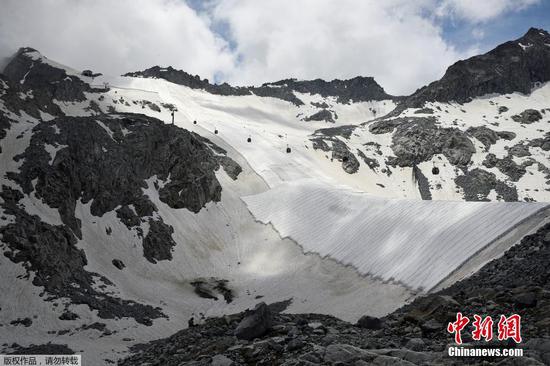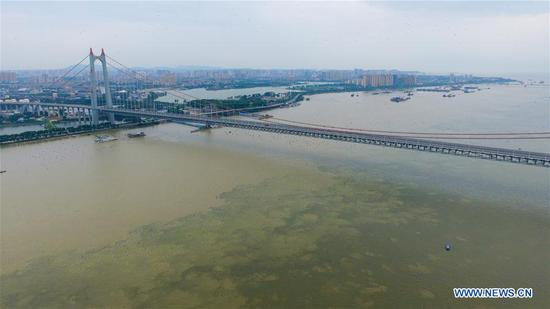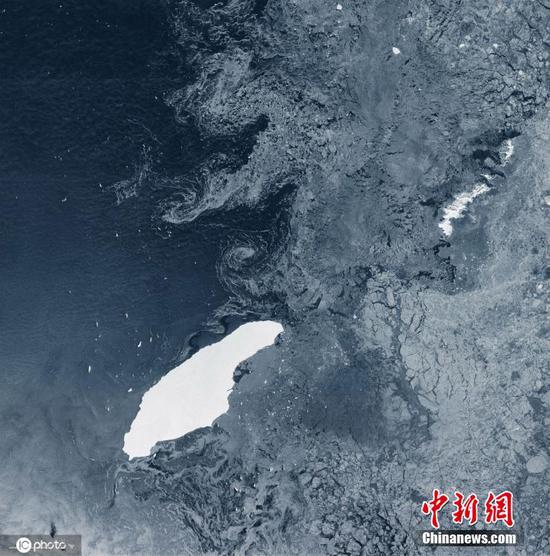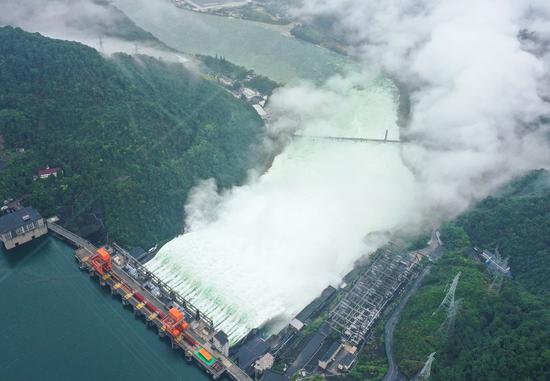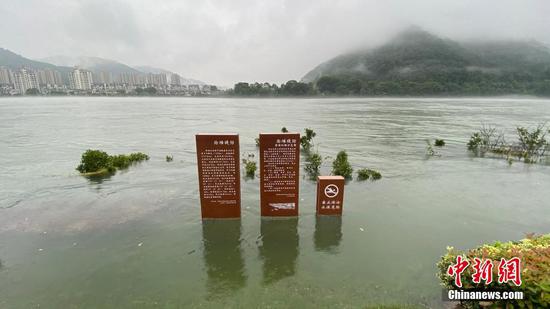
A river in Rongchang district of Southwest China's Chongqing rises to an alarming level due to downpours on July 15, 2020. (Photo/Xinhua)
Heavy rainfall will move into North China in the next 30 days while continuous rainstorms that hit and flooded southern parts will subside, according to the China Meteorological Administration.
Since June, seven bouts of heavy rainstorms hit about 64 percent of counties in South China.
From June 1 to July 14, the average precipitation in the south reached 344 millimeters, the sixth highest during the same period since 1961.
By Monday, the sustained rainstorms had affected 38.7 million people across the country, with 141 people missing or dead, and had damaged about 29,000 houses, according to the latest national data available from the Ministry of Emergency Management.
The latest monitoring from the administration's remote sensing satellite showed that coverage of the main parts and surrounding waters of Poyang Lake in Jiangxi province, where the flood situation is one of the most urgent, has reached 4,403 square kilometers, the largest since 2010 and 25 percent larger than the average size during the same period in previous years.
However, the result also showed that the recent water level of the lake has declined due to less rainfall.
Song Lianchun, head of the National Climate Center, said at a news conference on Wednesday that global warming and a subtropical high are to blame.
He said that global warming leads to frequent occurrences of extreme weather and climate changes. China, which is sensitive to such changes, has seen its number of rainy days increase by 3.9 percent every decade since 1960.
"Since June, the subtropical high has been stronger than in previous years, a result of an unusually warmer North Indian Ocean. Meanwhile, cold air in the north, which has been relatively frequent, met warm air in the south, resulting in frequent and continuous heavy rainfall," he said.


















